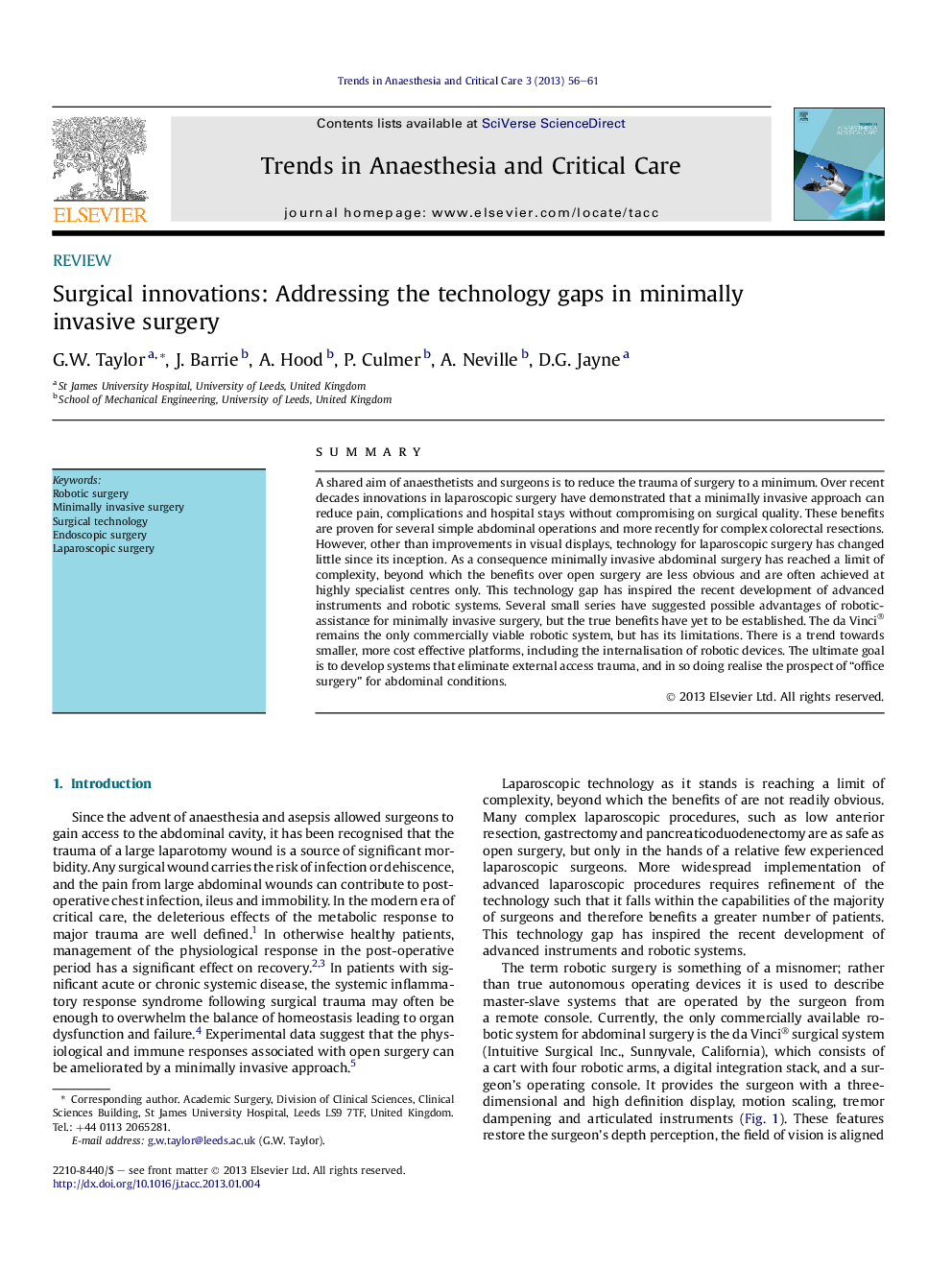| Article ID | Journal | Published Year | Pages | File Type |
|---|---|---|---|---|
| 2772766 | Trends in Anaesthesia and Critical Care | 2013 | 6 Pages |
SummaryA shared aim of anaesthetists and surgeons is to reduce the trauma of surgery to a minimum. Over recent decades innovations in laparoscopic surgery have demonstrated that a minimally invasive approach can reduce pain, complications and hospital stays without compromising on surgical quality. These benefits are proven for several simple abdominal operations and more recently for complex colorectal resections. However, other than improvements in visual displays, technology for laparoscopic surgery has changed little since its inception. As a consequence minimally invasive abdominal surgery has reached a limit of complexity, beyond which the benefits over open surgery are less obvious and are often achieved at highly specialist centres only. This technology gap has inspired the recent development of advanced instruments and robotic systems. Several small series have suggested possible advantages of robotic-assistance for minimally invasive surgery, but the true benefits have yet to be established. The da Vinci® remains the only commercially viable robotic system, but has its limitations. There is a trend towards smaller, more cost effective platforms, including the internalisation of robotic devices. The ultimate goal is to develop systems that eliminate external access trauma, and in so doing realise the prospect of “office surgery” for abdominal conditions.
